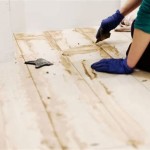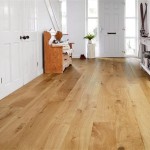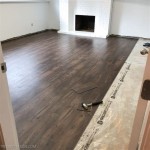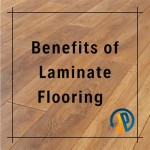What Is the Difference Between Laminate and Parquet Flooring in the Kitchen?
Choosing the right flooring for your kitchen is a crucial decision, as it will impact the look, feel, and functionality of this central space. Two popular options that often come up in discussions are laminate and parquet flooring. Both offer attractive aesthetics and durability, but they differ significantly in their composition, installation, and overall characteristics. This article will delve into the differences between these two types of flooring to help you make an informed choice for your kitchen.
Composition and Construction
Laminate flooring is a synthetic material that simulates the look of natural wood, stone, or tile. It consists of multiple layers pressed together. The bottom layer provides stability, followed by a core layer made of high-density fiberboard or melamine. The decorative layer, which mimics the desired appearance, is then printed on a wear-resistant layer. Finally, a clear protective layer is applied to shield the floor from scratches, stains, and wear.
Parquet flooring, on the other hand, is made from real wood, typically hardwoods such as oak, maple, or walnut. These wood pieces are cut into small squares, rectangles, or other geometric shapes, and then assembled in intricate patterns to create a visually appealing surface. Each piece is individually crafted and finished, and the overall structure is designed to provide both durability and visual sophistication.
Installation Process
Laminate flooring is known for its relatively easy installation process. It typically uses a click-and-lock system, allowing individual planks to be joined together without the need for glue or nails. This method simplifies the installation, making it a suitable DIY project for many homeowners.
Parquet flooring, however, requires expert craftsmanship for installation. The intricate patterns and precise cuts demand skilled hands to ensure a seamless and aesthetically pleasing result. It involves attaching the individual pieces to a subfloor using glue or nails, depending on the specific type of parquet and subfloor.
Performance and Durability
Laminate flooring is a highly durable option, resistant to scratches, dents, and moisture. Its synthetic nature makes it less susceptible to warping or rotting, making it a good choice for areas prone to spills or humidity. However, laminate can be less forgiving when it comes to heavy impacts, and it may not be as soundproof as other flooring options.
Parquet flooring, with its solid wood construction, provides superior durability and longevity. It can withstand heavier foot traffic and is more resistant to scratches and dents. While it can be susceptible to moisture damage, proper sealing and regular maintenance can help prevent issues. Parquet flooring is known for its natural warmth and sound-absorbing qualities, creating a more comfortable and quiet environment.
Cost and Maintenance
Laminate flooring is generally more affordable than parquet, making it a budget-friendly choice for kitchen renovations. Its easy installation and lower maintenance requirements further contribute to its cost-effectiveness.
Parquet flooring is a more expensive option due to the use of real wood and the complexity of installation. Its maintenance requires regular cleaning, refinishing, and occasional repairs, which can add to the overall cost over time.
Aesthetic Considerations
Both laminate and parquet flooring offer a wide range of styles and colors to complement any kitchen design. Laminate can mimic the look of various natural materials, including wood, stone, and tile, providing versatile design options. Parquet flooring offers a more classic and elegant aesthetic, with intricate patterns and rich wood tones that add sophistication to any kitchen.
In conclusion, both laminate and parquet flooring provide valuable features for kitchens. Laminate offers affordability, convenience, and durability, while parquet provides elegance, warmth, and longevity. The best choice ultimately depends on your specific needs, budget, and preferences. By carefully considering the advantages and disadvantages of each type, you can select the flooring that best suits your kitchen's design and functionality.

Pros And Cons Of 5 Popular Kitchen Flooring Materials

Best Flooring For Kitchen Direct

Choosing Between Laminate And Engineered Wood Flooring Jg

Best Type Of Flooring For The Kitchen Twenty Oak

Laminate Vs Vinyl Flooring Comparison Guide

Options For The Best Kitchen Flooring Lx Hausys

Laminate Wood Flooring Explained Esb

Durable Kitchen Wood Flooring The Solid Company

Kitchen Floor Ideas For Your Home Carpet One

Hot Flooring For Kitchens Is Wood But What About Water The Seattle Times
See Also







